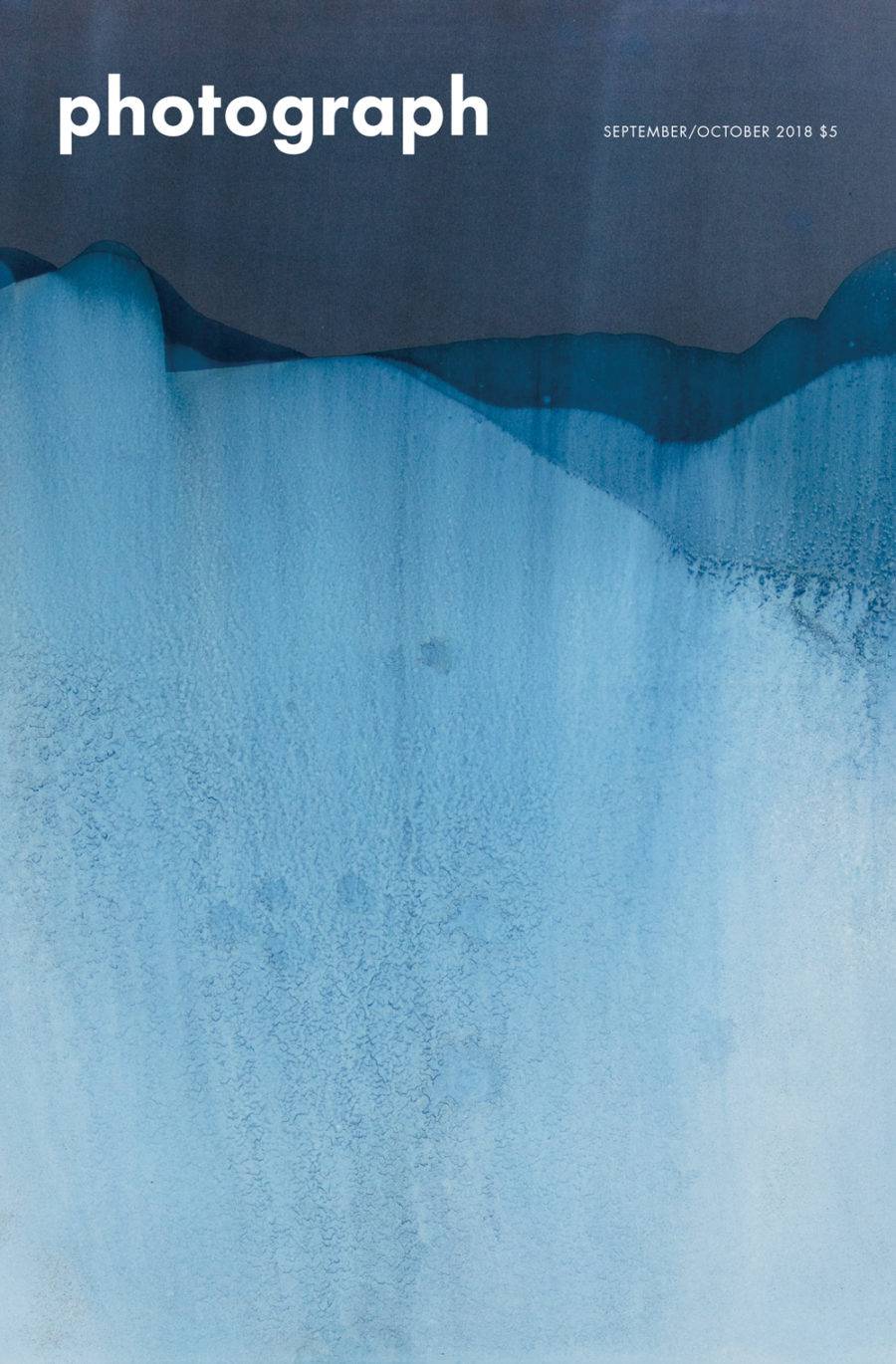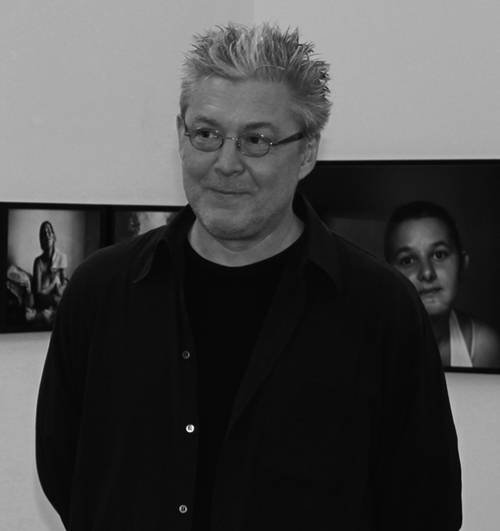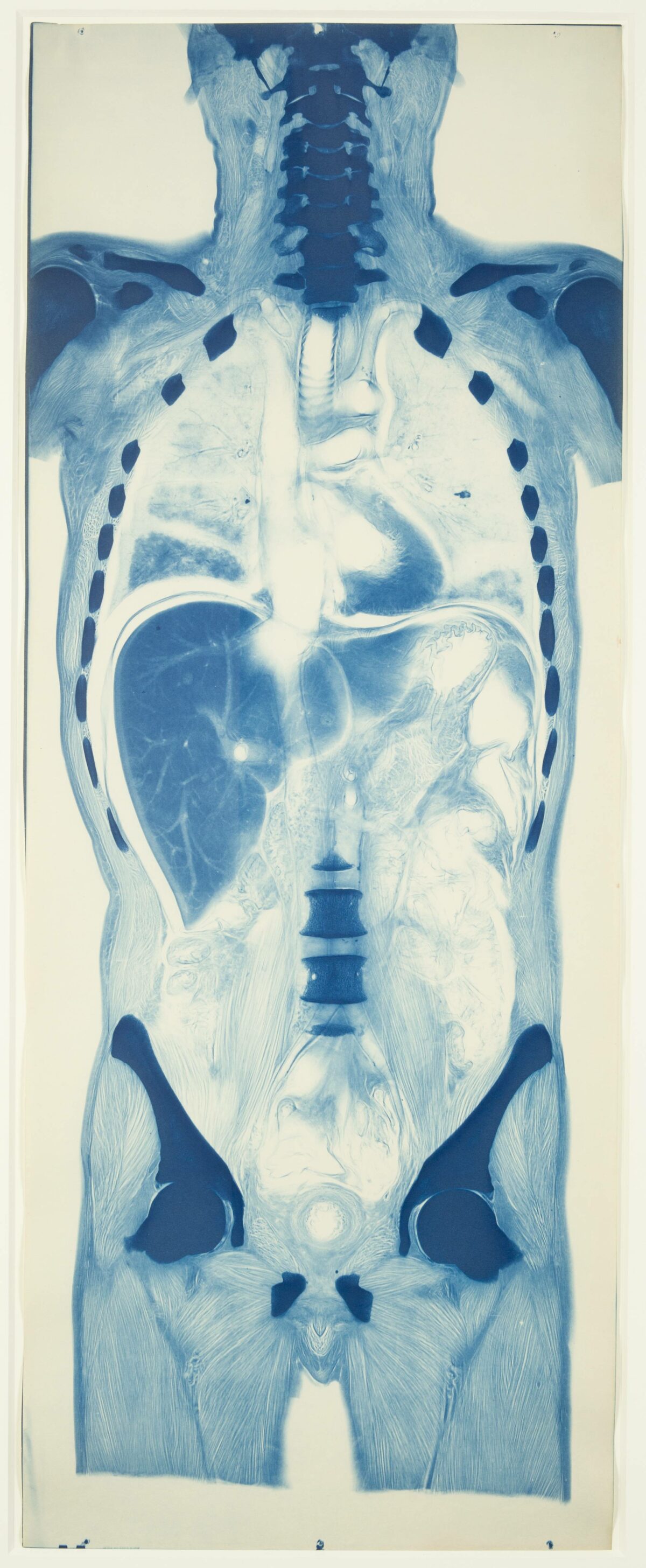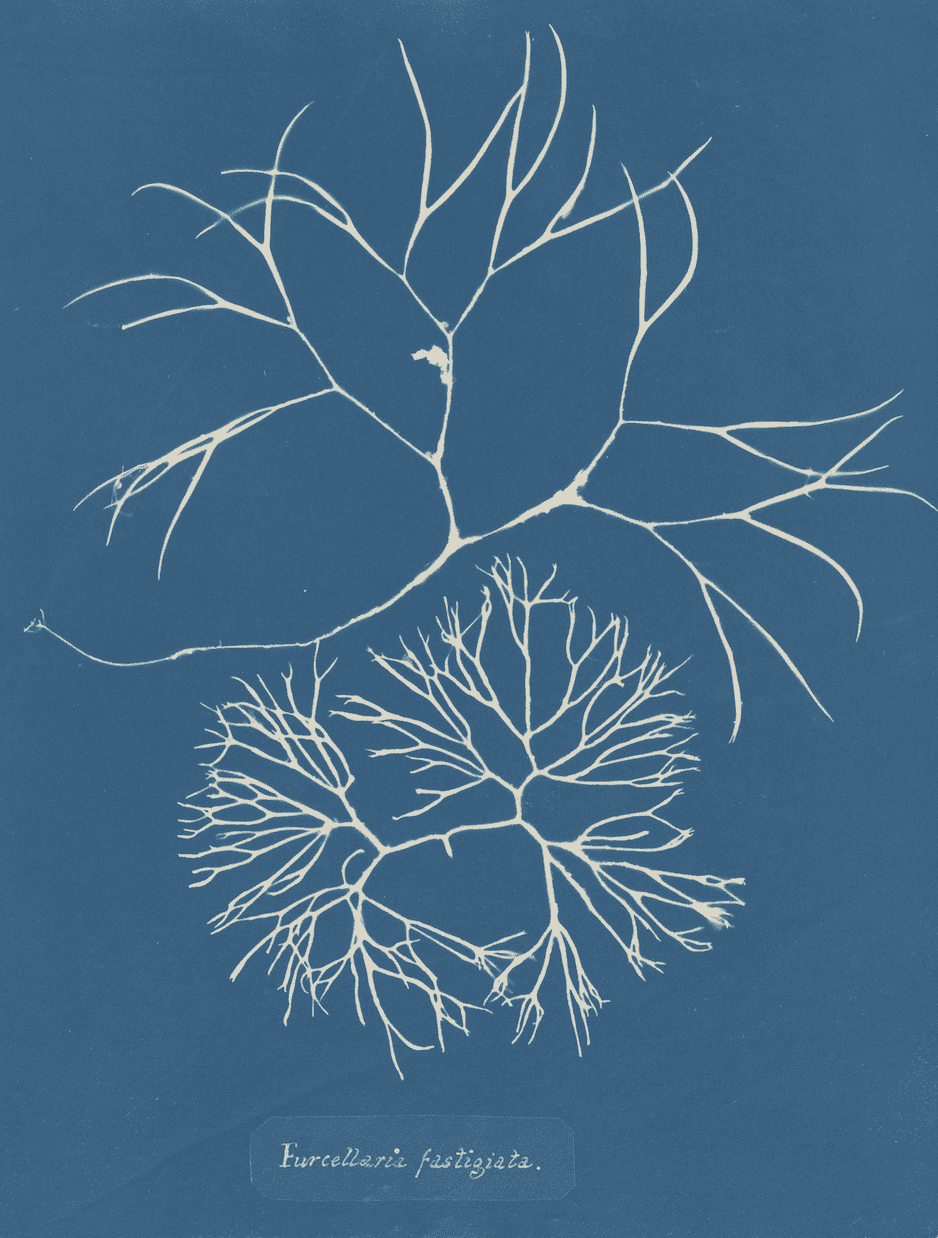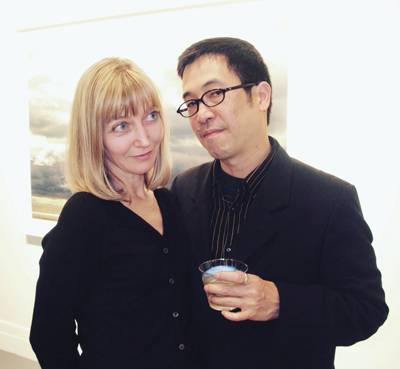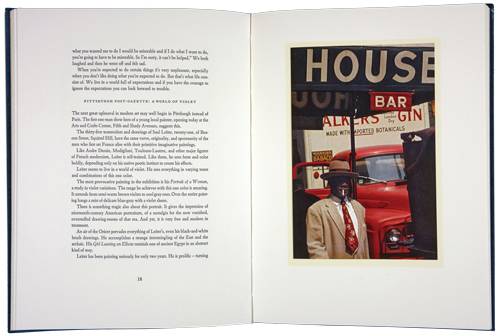“Chaos with a dash of control” is how Meghann Riepenhoff has described the process behind her gestural, tactile cyanotypes. Riepenhoff is one of a group of contemporary photo-based artists – Matthew Brandt, Alison Rossiter, Daisuke Yokota, and Shimpei Takeda are a few others – who are deeply engaged in new ways of working with old-fashioned, chemical-based, cameraless processes.
Riepenhoff was inspired by the 19th-century English botanist and photographer Anna Atkins, whose book of cyanotypes, British Algae, was a milestone in the history of photography; her work is marine-based as well, but looser, more open to chance, and more comfortable with impermanence and instability. Based in California’s Bay Area and on Bainbridge Island, Washington, she creates the pieces in her series Littoral Drift, on view at Yossi Milo Gallery from March 16 to April 29, through direct encounters with the environment. In some cases, she stands in the surf with large pieces of light-sensitive, chemically coated paper to record the movement of the sand and water washing over them; in others, she pins the paper down, letting water and sediment flood over it, or removes the paper from the water and buries a portion of it in the sand while it develops. The title of the series refers to the geographic process by which sand and sediment is moved along the coast by the waves at an angle to the shoreline, but there’s also a nice wordplay to it, since “littoral” sounds like “literal,” and her cyanotypes are a literal, material record of water, wind, and sand against a surface.
Riepenhoff doesn’t completely wash the chemistry off of the paper, so the images continue to develop, slowly, over time, the color changing, salt crystallizing, sediment shedding. (Although she sometimes photographs a single cyanotype over time to capture those gradual changes in a series she calls Continua.) Impermanence is the thread that connects all aspects of her work. If the fugitive nature of the images can be said to reflect the fragility of the environment, it also points to the changing nature of photography itself.


